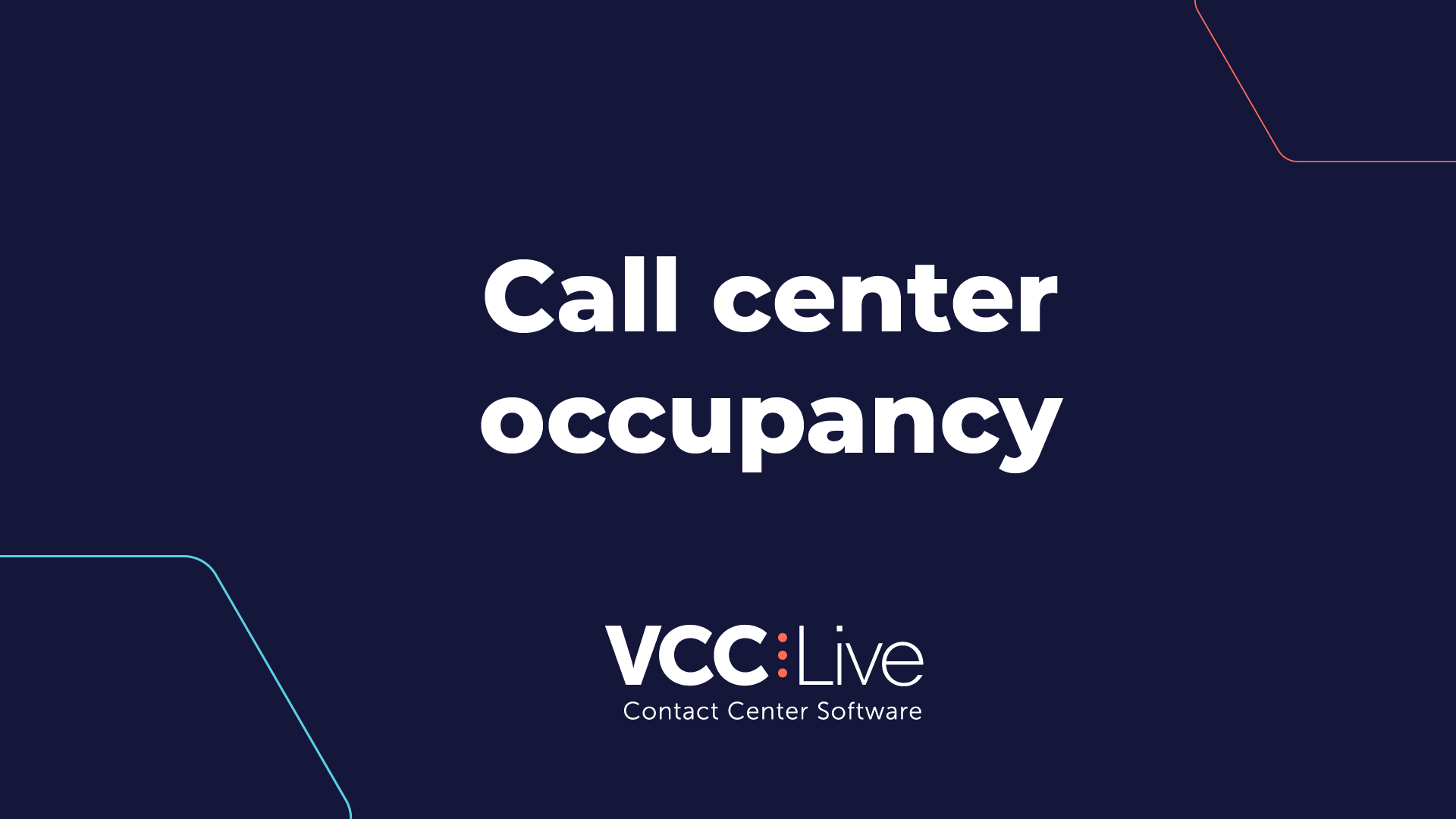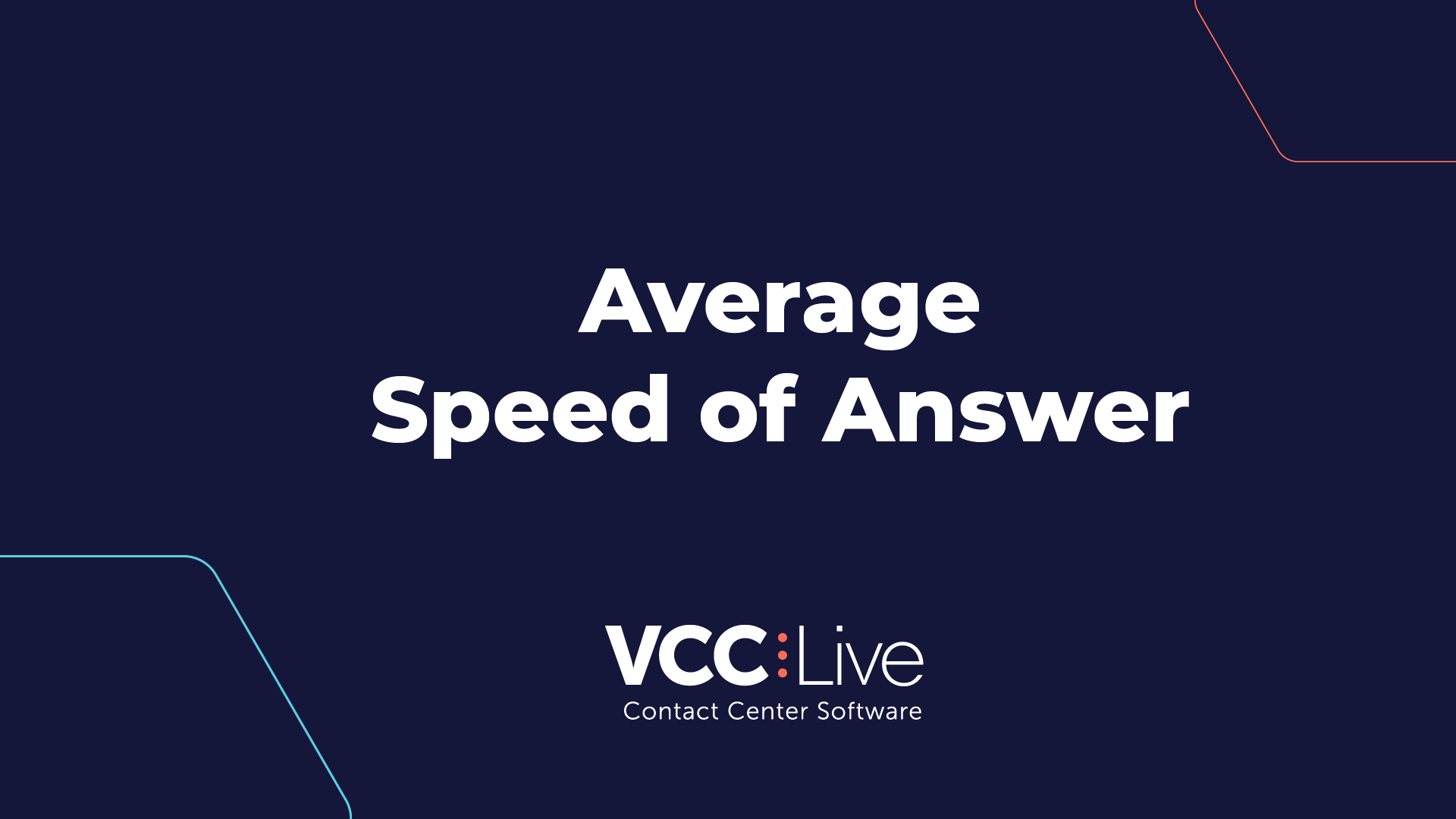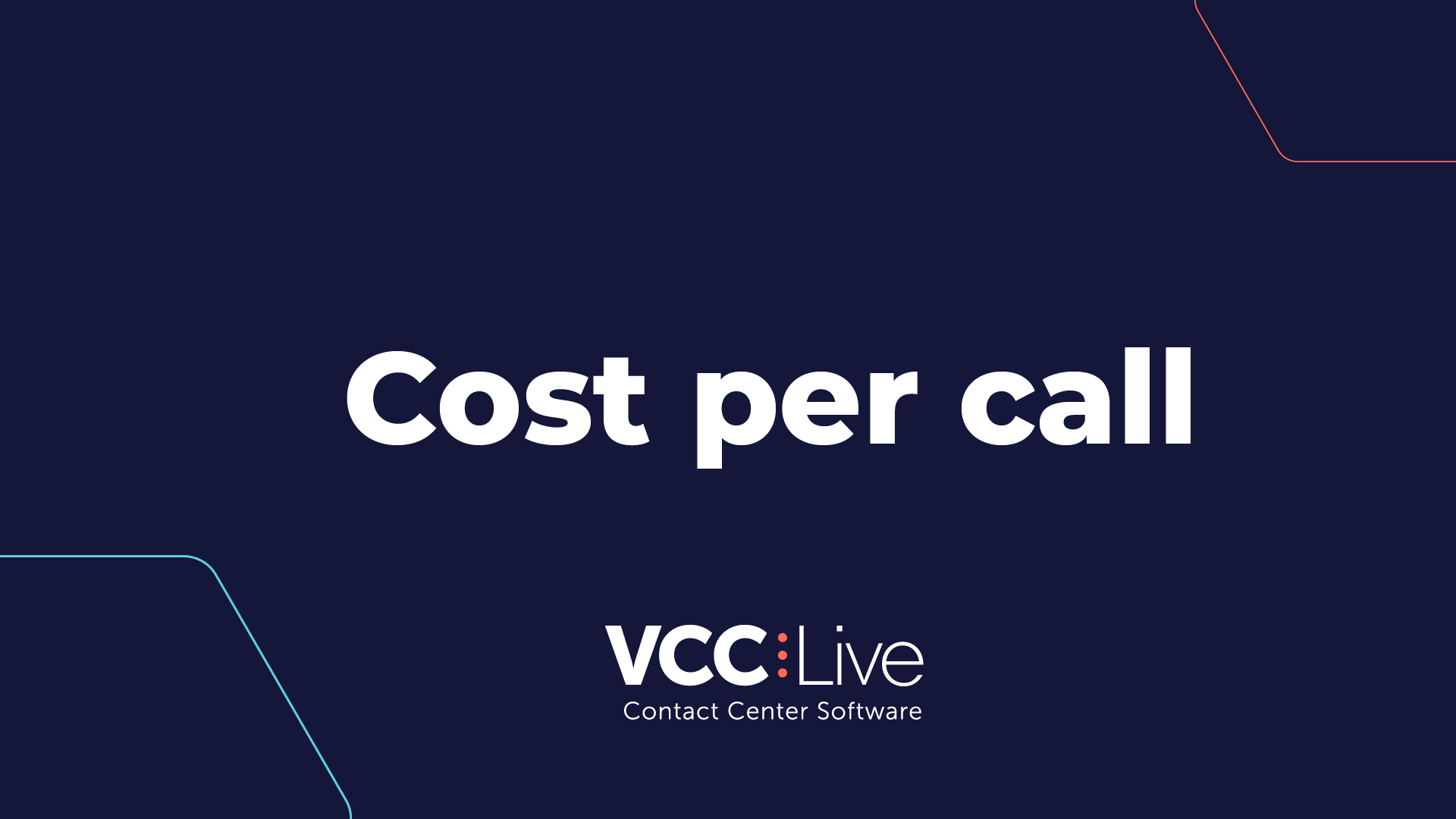According to a study, 58% CX leaders say that their top challenge is retaining agents. High turnover rates can have several implications, such as increased recruitment and training costs, loss of productivity and in some cases, even lower quality customer service.
It’s generally desirable for organizations to have lower turnover rates, indicating a more stable and productive work environment. Read on to learn more about call center turnover rate and how it can be lowered in your operation.
Definition
Call center or contact center turnover rate (also known as agent attrition or churn rate) is a measure of the number of employees who leave a call center within a specific period of time, expressed as a percentage of the total workforce. This metric reflects the rate at which call center agents are leaving their positions.
|
Call center turnover rate formula
Call center turnover rate is calculated using the following formula:
| Agent turnover = [ |
Number of agents who left |
] * 100 |
| Average number of agents |
The components are:
- Number of employees departed: This represents the total count of employees who left the call center during the specified time period. This includes resignations, terminations, retirements, or any other form of employment separation.
- Average number of employees: This is the average count of employees over the same time period. To calculate this, add the number of employees at the beginning and end of the period and divide by 2. Alternatively, you can use the average number of employees for each month if you’re calculating monthly turnover.
The formula is expressed as a percentage to provide a standardized way of comparing turnover rates across different organizations, departments or time periods.
Organizations may analyze turnover rates for specific time periods (monthly, quarterly, or annually) to identify trends, understand the reasons behind employee departures, and implement strategies to improve retention. High turnover rates can be influenced by factors such as job dissatisfaction, lack of career growth opportunities, inadequate training, or poor management, among others.
The importance of measuring call center turnover rate
Measuring turnover rate in call centers is important for several reasons, and it provides valuable insights into the health and dynamics of the workforce. Here are some key reasons why organizations monitor and analyze turnover rates in call centers:
- Cost implications: High turnover can be costly for organizations due to the expenses associated with recruiting, hiring, and training new employees. By measuring turnover, organizations can estimate the financial impact and work towards minimizing these costs.
- Impact on customer service: Call centers play a crucial role in customer interactions. High turnover rates can result in a less experienced and less skilled workforce, potentially affecting the quality of customer service. Monitoring turnover helps organizations assess and address any negative impact on customer satisfaction.
- Employee morale and satisfaction: Consistently high turnover rates may indicate underlying issues with employee morale and job satisfaction. Understanding the reasons behind employee departures allows organizations to identify areas for improvement in work conditions, management practices, and overall job satisfaction.
- Operational disruptions: Frequent turnover can lead to disruptions in operations, as new employees need time to get up to speed with their responsibilities. This can impact productivity and service delivery. By measuring turnover, organizations can anticipate and manage potential disruptions.
- Training and development: A high turnover rate may indicate shortcomings in the training and development programs provided to employees. Monitoring turnover helps organizations assess the effectiveness of their training initiatives and make adjustments to better prepare employees for their roles.
- Identifying trends and patterns: Analyzing turnover data over time allows organizations to identify trends and patterns. For example, certain times of the year or specific roles may experience higher turnover. This information can guide proactive measures to address seasonal challenges or focus on improving retention in specific areas.
- Retention strategies: Measuring turnover provides the necessary data to develop and implement targeted retention strategies. Understanding the factors contributing to turnover allows organizations to address root causes and create initiatives to improve employee engagement and satisfaction.
Call center turnover rate in action – Example scenario
|
Let’s consider a growing online retail company that relies heavily on its customer support contact center to assist customers with inquiries, order issues, and product support. Over the past few months, rumors about higher-than usual turnover started circulating within the organization.
To address this, the HR department calculates the turnover rate for the customer support center over the past six months to determine if there is a significant increase in employee departures.
- Number of agents departed: The total count of employees who left the call center during the specified time period. In the past 6 months, 35 agents left the operation.
- Average number of agents: The average count of employees over the same time period. Let’s assume the average number of agents in the past 6 months was 100.
The HR team calculates the call center turnover rate using the formula mentioned above.
| Call center turnover rate = [ |
35 |
] * 100 |
| 100 |
The turnover rate is found to be 35%, which is higher than the industry average, indicating a potential area for concern.
In response, the company develops retention strategies for the customer support team, such as additional training, recognition programs and improved work-life balance. Thanks to these efforts, the turnover rate saw a remarkable decline from 35% to 15% within six months.
Continuous monitoring becomes a cornerstone of the company’s approach. They actively track turnover rates, employee satisfaction levels, and customer feedback to gauge the impact of the implemented strategies. The organization is committed to a culture of continuous improvement, regularly reassessing and adjusting strategies to align with evolving needs.
|
Call center turnover rate benchmarks
Call center turnover rates may vary based on factors such as the company’s policies, location, industry norms, and the overall labor market conditions. Some contact centers may experience turnover rates below or above these benchmarks depending on their specific circumstances, but as a rough estimate, here are some benchmarks to keep in mind:
Inbound customer support
- General benchmark: 20% to 30%
- Factors influencing turnover: Job stress, repetitive tasks, customer interactions
Outbound sales
- General benchmark: 25% to 35%
- Factors influencing turnover: Performance pressure, target-driven environment
Technical support
- General benchmark: 15% to 25%
- Factors influencing turnover: Technical complexity, continuous training needs
Debt collection
- General benchmark: 30% to 40%
- Factors influencing turnover: Challenging nature of the job, dealing with difficult customers
Billing and account management
- General benchmark: 20% to 30%
- Factors influencing turnover: Handling financial issues, attention to detail
Live chat or online support
- General benchmark: 15% to 25%
- Factors influencing turnover: Multitasking, written communication skills
Know your agents, reduce call center turnover rate
If you know what agents are commonly looking for in their role, you’re one step closer to creating a work environment they can thrive in for a long time. Here are 10 things agents find crucial in their job:
1. Job satisfaction
Agents value a sense of accomplishment and fulfillment in their daily tasks. A job that provides opportunities to make a positive impact and solve customer issues contributes to overall job satisfaction.
2. Supportive work environment
A supportive and collaborative work environment is crucial. Agents appreciate a team atmosphere where colleagues and supervisors work together to achieve common goals.
3. Clear communication channels
Agents look for clear communication channels within the organization. Regular updates, transparent communication about changes, and accessible channels to address concerns are essential for a positive work experience.
4. Effective training and development
Comprehensive training programs and ongoing development opportunities are highly valued. Agents want to feel equipped with the skills and knowledge necessary to excel in their roles.
5. Recognition and appreciation
Regular recognition for their efforts and contributions is important. Agents appreciate acknowledgment of their hard work, whether through verbal praise, employee recognition programs, or other forms of appreciation.
6. Career growth opportunities
Agents seek opportunities for career advancement within the organization. Clear career pathways, promotions, and opportunities for skill development contribute to long-term job satisfaction.
7. Fair compensation
Competitive and fair compensation is a significant factor. Agents want to feel that their efforts are appropriately rewarded, and they are receiving fair compensation for their role.
8. Work-life balance
Achieving a healthy work-life balance is crucial for agents. Flexibility in scheduling, reasonable work hours, and policies that support a balance between professional and personal life are highly valued.
9. Technology and tools
Agents look for access to modern technology and tools that streamline their workflow and enhance their ability to provide efficient and effective customer service.
10. Job security
A sense of job security is important for agents. Knowing that their role is stable and that the organization values and invests in its employees contributes to a positive work experience.
Is call center turnover rate a high-priority KPI for your business?
Improving turnover rates is generally relevant for most types of contact centers, as high turnover can have negative consequences across various industries. However, the level of emphasis on improving turnover rates may vary based on factors such as the nature of the work, industry norms, and the impact of turnover on organizational goals. Here’s a general perspective.
Contact centers that should focus on improving turnover rates
- Customer support centers: These centers often deal with a high volume of customer inquiries and issues. High turnover can lead to lower customer satisfaction and increased training costs.
- Technical support centers: The specialized nature of technical support roles often requires ongoing training. High turnover can result in a less experienced workforce, impacting the quality of technical assistance provided.
- Sales and outbound call centers: In roles where performance is closely tied to sales targets, constant turnover can hinder the development of a skilled and effective sales team.
- Specialized or industry-specific centers: Contact centers in industries with unique processes or regulations may benefit from lower turnover to ensure employees acquire and retain specialized knowledge.
- Collections and debt recovery centers: The challenging nature of debt collection work can contribute to high turnover. Reducing turnover is crucial for maintaining a knowledgeable and effective team.
Contact centers where turnover rates may be less critical
- Seasonal or temporary call centers: Contact centers with a primarily seasonal or temporary workforce may expect higher turnover rates as part of their operational model. However, efforts can still be made to improve retention during peak seasons.
- Simple transactional centers: In some contact centers where tasks are relatively simple and standardized, turnover rates may have a less pronounced impact. However, even in such cases, lower turnover can contribute to a more stable and efficient operation.
- Short-term campaign-based centers: If a contact center operates on short-term campaigns with a specific start and end date, turnover rates may be less critical. However, retention efforts can still be valuable for maintaining consistency and morale.
It’s essential for organizations to assess their specific context, business goals, and industry norms when determining the significance of turnover rates. While turnover reduction is generally beneficial, the degree of emphasis on this KPI may vary depending on the unique circumstances of each contact center. Additionally, analyzing turnover trends and understanding the reasons behind departures can provide insights into areas for improvement and inform targeted retention strategies.
Call center turnover rate improvement checklist
Here’s a checklist you can use to spot places of improvement when it comes to retaining your agents.
☑ 1. Recruitment and onboarding
- Review job descriptions: Ensure that job descriptions accurately reflect the responsibilities and expectations of the role.
- Refine recruitment process: Identify and implement improvements to the recruitment process to attract candidates who align with the organization’s values and goals.
- Enhance onboarding programs: Develop a comprehensive onboarding program that provides new hires with the necessary information, tools, and support for a successful start.
☑ 2. Training and development
- Assess training programs: Regularly evaluate training programs to ensure they are effective and align with the evolving needs of the call center.
- Provide ongoing training: Offer continuous learning opportunities to keep employees engaged and up-to-date on industry trends and best practices.
☑ 3. Career development
- Implement career pathways: Establish clear career paths and development opportunities within the organization to promote employee growth and retention.
- Encourage skill development: Support employees in acquiring new skills relevant to their roles through training programs and workshops.
☑ 4. Employee recognition and rewards
- Recognition programs: Implement employee recognition programs to acknowledge and reward outstanding performance and contributions.
- Competitive compensation: Regularly review and adjust compensation packages to remain competitive in the industry.
☑ 5. Work-life balance
- Flexible scheduling: Consider offering flexible scheduling options to support work-life balance for employees.
- Time-off policies: Ensure that time-off policies are clear, and employees feel encouraged to use their allotted time off.
☑ 6. Employee engagement
- Regular feedback: Establish regular feedback mechanisms to gauge employee satisfaction and address concerns promptly.
- Employee surveys: Conduct periodic surveys to gather insights into the work environment, job satisfaction, and potential areas for improvement.
☑ 7. Managerial support
- Leadership training: Provide leadership and managerial training to ensure supervisors effectively lead and support their teams.
- Open communication: Encourage open communication between management and employees to foster a positive and supportive work culture.
☑ 8. Exit interviews
- Conduct exit interviews: Regularly conduct exit interviews to understand the reasons behind employee departures and identify patterns or recurring issues.
- Implement action plans: Use insights from exit interviews to develop action plans for addressing specific concerns and improving the workplace.
☑ 9. Employee wellness
- Wellness programs: Introduce wellness programs to promote physical and mental well-being among employees.
- Employee Assistance Programs (EAP): Offer EAP services to provide confidential support for personal and work-related challenges.
☑ 10. Metrics and data Analysis
- Monitor turnover metrics: Regularly track and analyze turnover metrics to identify trends and assess the effectiveness of retention strategies.
- Benchmarking: Compare turnover rates with industry benchmarks to understand how your call center compares to others.
☑ 11. Continuous improvement
- Regularly update the plan: Continuously review and update the improvement plan based on feedback, data analysis, and changing organizational needs.
- Celebrate successes: Celebrate achievements and successes in turnover reduction to boost morale and reinforce positive behaviors.
Use contact center software that enhances agent experience
The contact center software solution of your choice also has an impact on agent retention rates. If you pick an option that supports remote work, automates mundane tasks and helps supervisors offer meaningful feedback and help to agents, you’re a lot closer to maintaining sustainable call center turnover rates.




















